Secret Gardens: Blenheim Palace, Oxfordshire
Posted by SECRET GARDENER
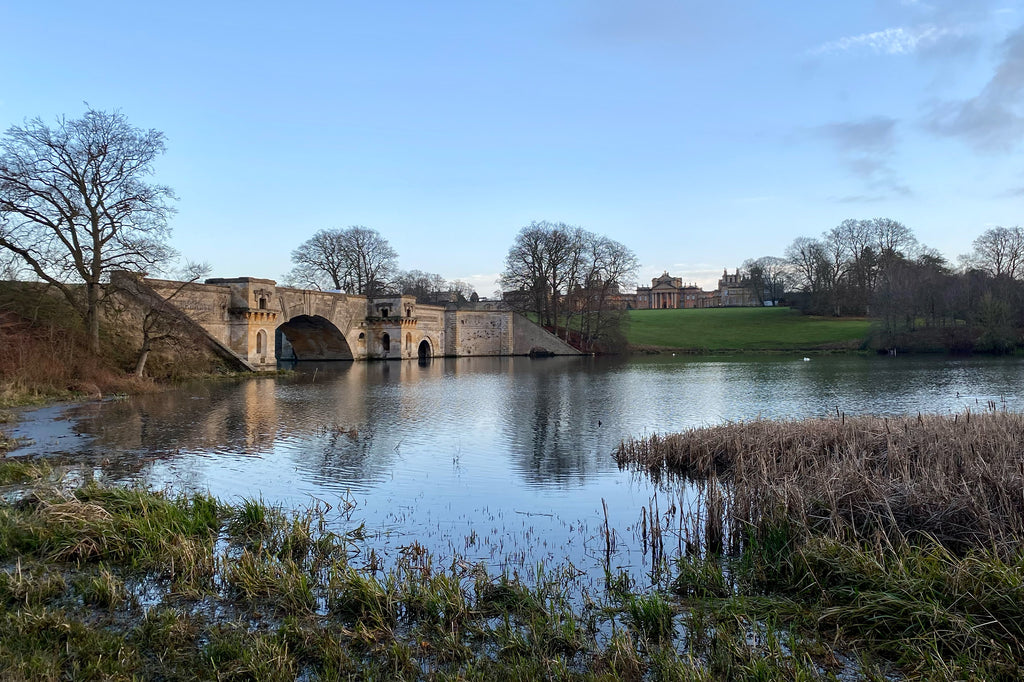
Exploring Blenheim Palace in Oxford
Located in the beautiful Oxfordshire countryside, Blenheim Palace is a tremendous country house well known for being the birthplace of Winston Churchill, the residence of the Dukes of Marlborough, and a UNESCO World Heritage Site.
It’s also the only non-royal and non-episcopal house in England to be called a palace, and with a fascinating history and impressive grounds it is definitely worthy of the title.
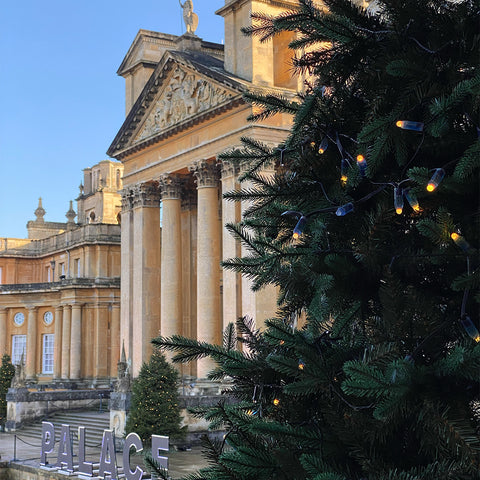 Above: the exterior of Blenheim Palace at Christmas
Above: the exterior of Blenheim Palace at Christmas
The turbulent history of Blenheim Palace
The land was originally gifted to John Churchill – the 1st Duke of Marlborough (ancestor of Winston Churchill) – in thanks for his victory at the Battle of Blenheim in 1704.
After a financial endowment from Queen Anne, the grand new home was underway. Vanbrugh, the architect (he was also a playwright!) known for his flamboyant English Baroque-style buildings, was eventually banned from the site for his costly architectural extravagances. The Marlboroughs themselves were also forced into exile abroad after a quarrel with the Crown. Loss of the Queen’s favour and funds meant that it would be nearly twenty years before the palace was completed. The Churchills and their home were eventually saved from ruin by the 9th Duke’s marriage to an American heiress (and her large fortune) at the end of the 19th century.
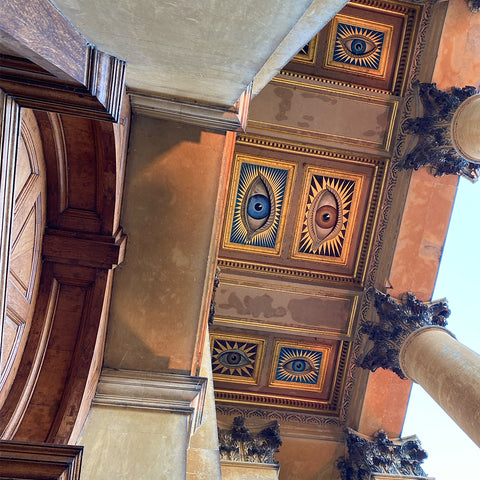 Above: The duke’s second wife, Gladys Deacon, had striking blue eyes which are painted on the inner roof of the palace entrance to watch over all who enter. The owner of the brown eyes is however a mystery.
Above: The duke’s second wife, Gladys Deacon, had striking blue eyes which are painted on the inner roof of the palace entrance to watch over all who enter. The owner of the brown eyes is however a mystery.
Despite the drama surrounding its construction, Blenheim Palace now sits as one of the most remarkable country homes in England.
The palace was used as a hospital for wounded soldiers in World War I. During World War II, 400 pupils were evacuated there for a year and only allowed to use pencils – so they couldn’t accidentally damage any of the works of art hanging on palace walls.
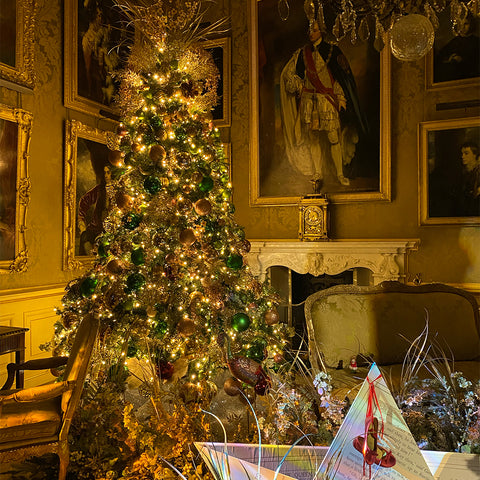 Above: the interior of Blenheim Palace decorated for Christmas
Above: the interior of Blenheim Palace decorated for Christmas
Blenheim Palace's 2000 acres of gardens
The Formal Garden surrounds the palace with statues, majestic fountains, and elaborate maze-like hedging. Composed by French architect Achill Ducêne as part of a restoration to the grounds in the early 1900s, they have since been compared to the grandeur of the Parterre d'Eau (water terraces) at Versailles. The four statues surrounding the pools are of the Roman goddess of love, Venus. It was a popular design feature to include her figure in gardens during the 18th Century, as she is also the guardian of gardens.
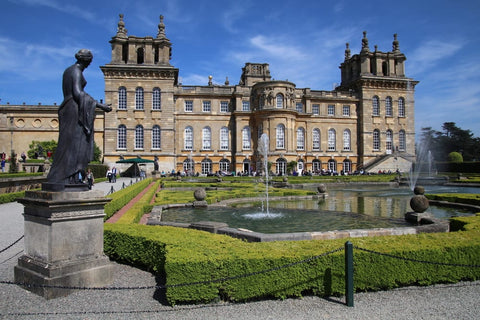 Above: one of the classic forms of Venus. Image: Ox Magazine
Above: one of the classic forms of Venus. Image: Ox Magazine
The duke has a private Italian Garden, at the centre of which you can see the tall Mermaid Fountain by American sculptor Waldo Storey.
Across the lawn towards the trees at the back of the palace, you will find The Secret Garden. First planted in 1950s by the 10th Duke of Marlborough (around the time when the palace first opened to visitors) it served as this duke’s place of escape from the palace’s many curious visitors.
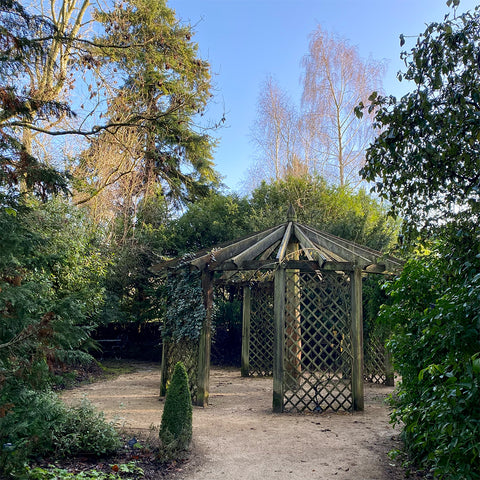 Above: the pergola in the Secret Garden, planted with climbers including clematis and wisteria
Above: the pergola in the Secret Garden, planted with climbers including clematis and wisteria
As a garden for all seasons, it flowers throughout the year to provide interest along its many paths unique from one visit to the next; you’ll see something different with every visit across its three acres of land.
As seen in...
The palace grounds are home to the oldest woodland in Europe, with some of the tallest oak trees dating back as far as the 12th Century. As the palace drive curves toward the lake, you can catch a glimpse of a particular tree across the Grand Bridge, on the banks of the lakes which were added to the Estate by landscape gardener, Lancelot ‘Capability’ Brown.
 Above: the 300 year old cedar of Lebanon tree
Above: the 300 year old cedar of Lebanon tree
The historic cedar of Lebanon tree is over 300 years old and starred in Harry Potter and the Order of the Phoenix. The ‘Harry Potter Tree’ is visited by hundreds of film fans each year, and has undergone extensive conservation work to prevent its collapse. The series’ other famous ‘Whomping Willow’ tree, an ancient yew tree in Hertfordshire, split in two and collapsed in 2014.
How to get to Blenheim Palace
Blenheim Palace
Woodstock
Oxfordshire
OX20 1UL
Blenheim Palace is located at the edge of the town of Woodstock in Oxfordshire. It is easily reached by bus from the centre of Oxford; all visitors travelling by bus, train or bike will receive discounted entry for the greener journey.
Travel: We got the Stagecoach bus S3 from Oxford Train Station to Woodstock, which drops you off outside the main entrance of the palace gates. From there it's about a 10 minute walk up to the palace. Buses depart four times an hour, and the journey took us about 35 minutes. You can buy a return bus ticket from the driver on the bus, or a day rider ticket if you need to travel more.
Entry: starting from £22.50 for an Adult ticket to the park and gardens, or £35.00 for additional entry into the palace (includes an annual pass).
Daily opening times: Palace 10.30 - 16.45, park 09.00 - 18.00
Find out more and read latest opening times and events on their website

